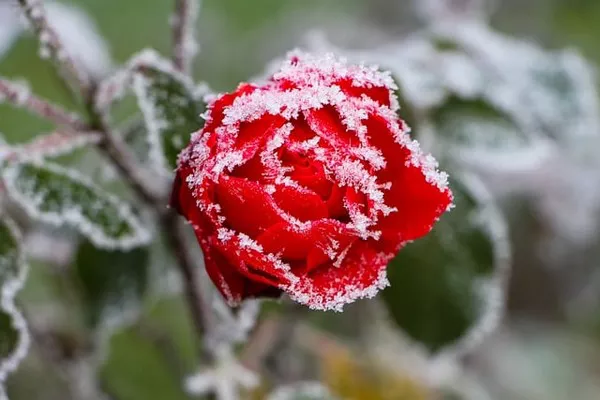Deer, graceful and gentle creatures, have long captured the imagination of nature enthusiasts and gardeners alike. While they are certainly a sight to behold, their presence can pose a challenge for those who cultivate beautiful flower gardens. One of the most common issues that gardeners face is deer munching on their beloved blossoms. In this article, we delve into the world of deer foraging behavior, exploring the flowers that deer find most tempting, and strategies to protect your garden.
The Culprits: What Flowers Do Deer Eat?
Deer are selective herbivores, and their diet largely depends on the availability of plants and the season. While deer primarily consume leaves, stems, and grasses, they have been known to develop a taste for flowers, especially when other food sources are scarce. Let’s take a closer look at some of the flowers that are most vulnerable to deer browsing:
Hostas (Hosta spp.): These shade-loving perennials are notorious for attracting deer. Their large, succulent leaves are a favorite delicacy.
Daylilies (Hemerocallis spp.): The bright and showy flowers of daylilies are hard for deer to resist. The tender buds and blossoms are often the first to go.
Roses (Rosa spp.): Despite their thorns, roses are a prized food source for deer. Young leaves and tender rosebuds are particularly appealing.
Tulips (Tulipa spp.): These early spring bulbs are a seasonal treat for deer. They often emerge just as deer are in need of fresh food after the winter months.
Impatiens (Impatiens spp.): These colorful annuals are a delightful addition to gardens, but their soft, juicy foliage makes them an easy target for deer.
Coneflowers (Echinacea spp.): While coneflowers are a favorite of pollinators, they can also attract deer. The leaves and stems are particularly vulnerable.
Yarrow (Achillea millefolium): Yarrow’s feathery, fragrant leaves are known to entice deer, especially in areas where their natural food sources are limited.
Dayflowers (Commelina spp.): The broad, tender leaves of dayflowers are often on the deer’s menu, making them a vulnerable choice for gardens.
Black-eyed Susans (Rudbeckia hirta): These cheerful wildflowers are popular among deer, who are drawn to both the leaves and the colorful blooms.
Phlox (Phlox paniculata): The fragrant, showy clusters of phlox flowers can be a tempting treat for deer, and they are known to nibble on the leaves as well.
It’s essential to recognize that the extent to which deer will indulge in these flowers varies based on several factors, including geographic location, the time of year, and the presence of alternative food sources. For example, in the spring when deer are in need of fresh vegetation after a harsh winter, they may be more likely to target flower gardens.
Understanding Deer Foraging Behavior
To effectively protect your garden from deer, it’s crucial to have a grasp of their foraging behavior. Here are some key insights into what drives deer to eat certain plants and how they make their selections:
Nutritional Value: Deer have a keen sense of what’s nutritionally valuable. They tend to choose plants that provide the highest energy content and are rich in protein. Flowers that are lush and tender fit the bill.
Seasonal Availability: Deer adapt their diet to the seasons. In the spring, they may indulge in fresh flowers and young growth, but as the seasons progress, they are more likely to turn to woody shrubs and acorns for sustenance.
Scent and Taste: Deer have sensitive noses and taste buds. They avoid plants with strong, pungent smells or bitter tastes. However, many garden flowers are selected for their pleasant scents and flavors, making them more attractive to deer.
Local Plant Preferences: Deer tend to develop local preferences for certain plants based on what is readily available in their habitat. These preferences can vary significantly from region to region.
Protecting Your Garden from Deer Damage
While deer can be a nuisance to gardeners, there are various strategies to protect your flowerbeds and landscaping from their foraging behavior. Here are some effective methods to deter deer:
Plant Deer-Resistant Varieties: Opt for flowers that are less appealing to deer. While no plant is entirely deer-proof, some varieties are less likely to be targeted. Examples include daffodils, foxgloves, and lavender.
Use Fencing: Installing a sturdy fence is one of the most effective ways to keep deer out of your garden. Deer fencing should be at least 7 to 8 feet tall to be truly effective. Electric fencing can also be a deterrent.
Repellents: Various commercial and homemade deer repellents are available. These can include sprays, powders, or even bars of soap. The key is to reapply them regularly, especially after rain.
Scare Tactics: Motion-activated sprinklers, noise-making devices, and even hanging aluminum foil strips can startle deer and make them think twice about visiting your garden.
Gardening Practices: Pruning lower branches on shrubs and trees can discourage deer, as it makes them less accessible. Consider planting deer-attractive plants closer to your home and less favored plants farther away.
Companion Planting: Some gardeners use companion planting to repel deer. For example, interplanting marigolds or garlic with your flowers can deter deer due to their strong odor.
Netting: Netting can be draped over vulnerable plants to physically prevent deer from reaching them. It’s best suited for smaller areas or individual plants.
Conclusion
Deer are beautiful and fascinating creatures, but their appetite for garden flowers can pose a challenge for gardeners. Understanding deer foraging behavior, their preferred flower selections, and the strategies to protect your garden is essential for maintaining your cherished flowerbeds and landscaping. By choosing deer-resistant varieties, employing physical barriers, using repellents, and practicing thoughtful gardening, you can create a thriving garden while minimizing deer damage. Balancing your love for nature with the desire to cultivate a vibrant garden can lead to a harmonious coexistence with these graceful animals.


